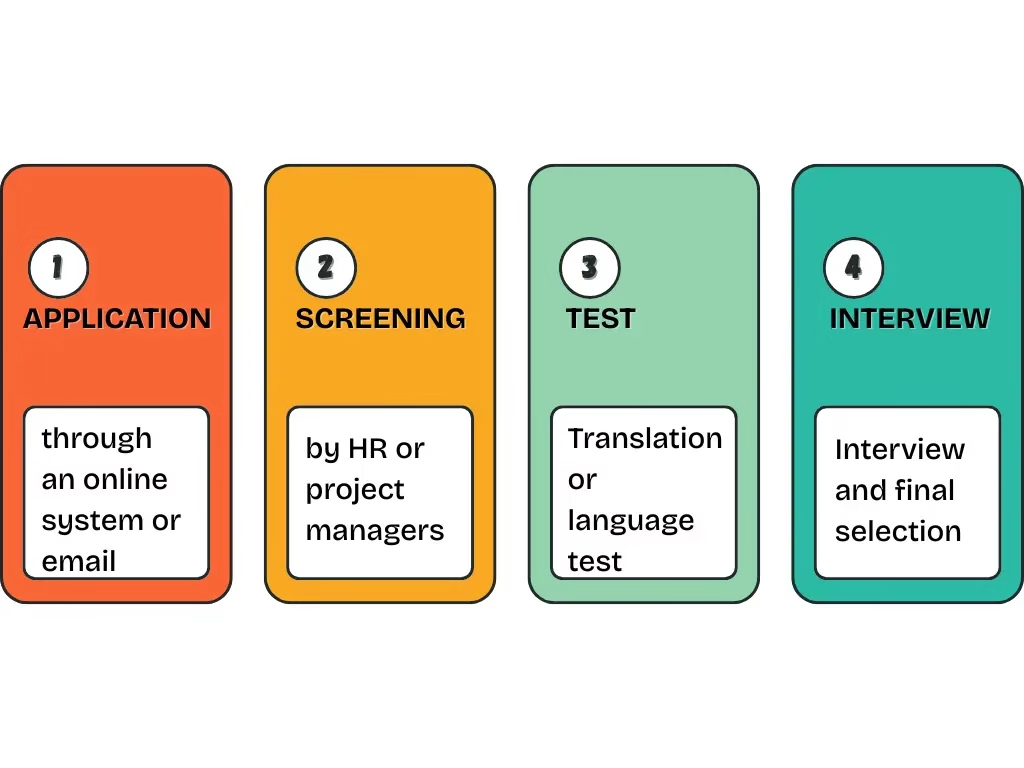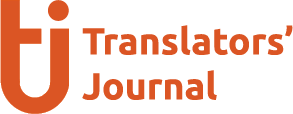When you are applying for an in-house translation role, it is important that you get it right so it takes you to an interview or the next stage of hiring.
Competition is tough. Recruiters often scan hundreds of applications to select just a few for interviews. Small mistakes can instantly disqualify you. Avoid these 10 common errors to improve your chances.
What the In-House Hiring Process Looks Like
Most in-house translation positions follow a structured recruitment process. Your goal at the application stage is simple: get past the initial screening. That means submitting a precise, relevant, and professional application that signals competence.
Here are the steps of a traditional in-house translator recruitment process:
- Application through an online system or email
- Screening by HR or project managers
- Translation or language test
- Interview and final selection

10 Common Mistakes to Avoid
When you apply to a position your goal is to make sure you pass the screening. Here’re 10 common mistakes you should avoid to get passed through the screening process.
1. Applying Without Meeting the Core Requirements
One of the most frequent mistakes is applying for every translation job, hoping one will fit. Hiring teams instantly spot when candidates lack the required language pair, field expertise, or experience level. Always match your qualifications against the listed requirements. Apply only if you meet most of them or the employer explicitly welcomes applicants with partial matches. Don’t rely on luck. Recruiters prioritise relevant, qualified candidates.
2. Ignoring Application Instructions
Follow every instruction carefully. Every posting includes specific directions such as “attach documents in PDF format” or “include the job title in the email subject.” Ignoring these shows poor attention to detail. Failure to comply often results in automatic disqualification, even if your skills are strong
3. Submitting Generic or Poorly Tailored Documents
A generic CV or cover letter signals lack of effort. Recruiters want to see how your experience fits their exact role. Always take the time to tailor your CV and cover letter to each job. This is a clear indication that you are interested and already invested in the job. This will take you a long way in the hiring decision.
4. Including Irrelevant or Outdated Experiences
Listing every job since university makes your CV dense and unfocused. Highlight only what aligns with translation or language-related work and more specifically to the role you are applying for. Specially pay attention to include projects that show your relevant subject-matter expertise. Include volunteer or academic translation work when you are early in your career.
5. Neglecting LinkedIn and Online Presence
Employers nowadays often check LinkedIn before shortlisting candidates specially for in-house translation roles. If your LinkedIn profile is outdated or empty that signals disengagement. Always make sure you have a professional photo and headline. Also make sure your LinkedIn profile aligns with your CV.
6. Writing Vague or Generic Statements
Phrases like “I am passionate about translation” or “I have great attention to detail” add no value. Show don’t tell. Recruiters scan for specific skills and outcomes. Instead tell if you have subject specialization, relevant project results and measurable impact. Always try to be specific.
7. Grammar, Spelling, and Formatting Errors
Errors in your application are fatal. In translation attention to details is a must. A single mistake can raise doubts about your translation accuracy. Proofread meticulously. You can use tools like Grammarly your word processor’s spelling functionality. Reading the text aloud often fixes grammatical errors. Besides, whenever possible have another set of eyes to review your application before submission.
8. Using an Unprofessional Email Address
People often make judgments from small cues. This is more true for recruiters. It’s hard to trust a person with an email like wordwizard88@gmail.com or partygirl@yahoo.com. Try to use a firstname.lastname@domain.com email or other professional alternatives.
9. Exaggerating or Fabricating Qualifications
Never overstate your skills or invent experience. This may pass you initial screening but will fail you later. Honesty and clarity are two highest ethical criteria a translator must adhere to.
10. Submit All Required Documents
Job posts often request submitting multiple documents e.g. resume, cover letter, and sometimes samples or test translations. Missing even one can disqualify your application.
Before submitting:
- Re-read the posting.
- Confirm you’ve attached every required file.
- Double-check formats and naming conventions.
💡 Pro Tip
As a professional translator, you’ll likely apply for many roles throughout your career. Create a master document listing your education, experiences, and project details in chronological order with dates and short descriptions.
Keep it updated. When applying for a job, copy only the relevant sections to tailor each CV quickly and accurately.



